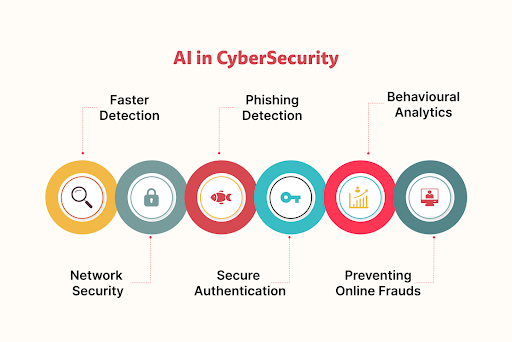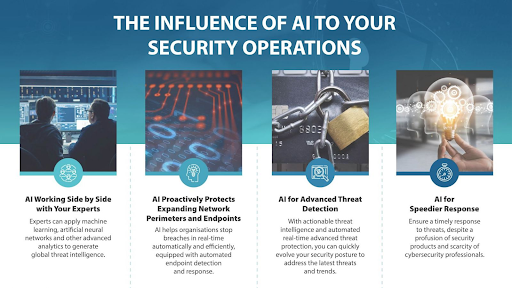Stay Ahead of the Game: How AI Can Help You Avoid Cybersecurity Traps

I have never been a victim of cyber threats, but from what I’ve heard, the effects are devastating. Cybersecurity officers and consultants work tirelessly to implement security strategies to fight hackers. Artificial Intelligence (AI) is a new powerful tool that helps organizations and individuals stay ahead of cybersecurity threats.

How AI Helps Curb Cybersecurity Traps
AI could help curb cybersecurity traps by using the following methods:
Predictive Analysis
AI Algorithms can be trained to analyze large amounts of data and also identify a pattern that could indicate a potential cyber security threat. By analyzing network traffic, email traffic, and other data AI can identify anomalies that may indicate a possible attack.
Behavioral Analysis
AI Can be used to monitor user behavior and identify any unusual activity that may be indicative of cyber security threats. By analyzing and identifying behavioral patterns, AI can identify and alert the security team to take action.
Fraud Detection
AI can identify fraud, such as phishing scams or any form of fraudulent transaction. By analyzing a pattern in an e-mail or transaction data, an AI algorithm can identify suspicious activity and alert the security teams.
Malware Detection
AI Can be trained to detect malicious codes, viruses, and malware. Analyzing with AI could identify a pattern and identify a potential threat.
Automated Responses
AI can be used to automate responses to potential threats. By setting up your auto-response, you can quickly and effectively respond to threats without having to intervene manually.

Deploying AI Business Cybersecurity
Deploying AI in business cyber security can pose some challenging and complex processes. Deploying AI in business cybersecurity can provide several benefits, such as preventing and detecting cyber attacks, automating routine security tasks, and reducing response time to security incidents. Here are some steps to help with deploying AI in business cyber security:
- Identify the areas where AI can be most effective. Look for areas where AI can improve your existing cybersecurity measures, such as endpoint security, access control, network security, and threat detection.
- Choose the right AI technology. There are different forms of AI technologies available such as natural language processing, deep learning, and machine learning.
- Collect and analyze data. To train an AI algorithm, you will need to analyze and collect data. This includes data from past incidents, network traffic, and user behavior.
- Train and test your AI model. By using the data you collect, AI tests the model for accuracy and effectiveness. It continues to refine the model as new data becomes available.
- Deploy and integrate the AI model. Integrate the AI model with your existing cybersecurity measures, such as intrusion detection systems, firewalls, event management tools, and security information.
- Monitor and evaluate the AI model. Continuously monitor its performance and effectiveness and also make the necessary adjustments if needed.
- Train employees on how to use AI technology and its capabilities in cyber-security. This will assist in helping them understand how to use the tools to prevent any security incidents.
Remember, when you deploy AI in cybersecurity, it’s not a one-time deal. It requires continuous monitoring, refinement, and evaluation to effectively protect your business against cyber threats.

Source: HackerNews
Advertisement
















I love this blog, and great that you have shared these about staying ahead of the game: how ai can help you avoid cybersecurity traps. I enjoy reading this blog; hope to learn more from your blog in the future. Great points!! I love this blog; please keep updated us with such information. You must also check out Geekhq.co.nz it has some great insights too.
A very mediocre and uniformative article.
It look like it was written using chatgpt.
I believe that has unfortunately become the case for many of the articles here. Lots of new authors with names that also sound like they were generated randomly by a bot. And without any transparency as to what is going on here.
Some of these articles seem more like they are written by non-native speakers (incorrect usage of metaphors, idioms, minor grammatical errors etc.). If that is the case, then running the copy through ChatGPT would likey correct these errors.
I think, some of they said that they are freelances from South Africa. They are probably paid per article or per google clicks on each article. You can not expect anything substantial from this kind of journalism.